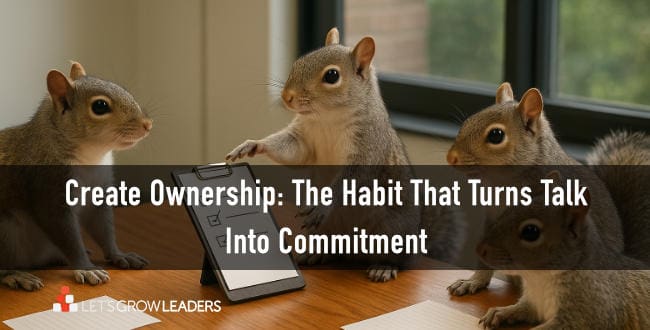No more safe silence – build courageous cultures for a brighter, bolder future.
We’ve spent the past three years researching, interviewing, and working with leaders of big and fast-growing companies, nonprofits, and government organizations around the globe to bring you Courageous Cultures: How to Build Teams of Micro-Innovators, Problem Solvers, and Customer Advocates.
And yes, we’re in the middle of a pandemic, a global racial equity movement, and one of the most challenging economies in one hundred years. We certainly didn’t know what was coming, but working together, we are confident that leaders who commit to building courageous cultures in their companies and teams will thrive. And that together, we can build a bolder, brighter future.
So, today as we celebrate this new resource for leaders and teams, we want to take a moment to answer some of the most frequent questions you’ve asked us over the past few months.
1) Why did you write Courageous Cultures?
We’ve worked with many senior leaders who consistently confide their frustration that people in their organizations don’t see problems and fix them and either aren’t thinking creatively on behalf of customers, employees, and processes or else aren’t speaking up with their creative ideas.
At the same time, we would talk with frontline employees and supervisors in those same organizations and they would say things like “no one wants to hear my ideas” and “they don’t really care what I think.”
This gap is concerning. Leaders need ideas from every level of the business. Employees have ideas and insights. But somehow, there’s a disconnect. We wanted to understand exactly why this happens and what exceptional organizations and leaders do to bridge the gap. So we partnered with the University of North Colorado on this extensive quantitative and qualitative research study.
Courageous Cultures is the product of that research and gives you a practical roadmap to overcome the barriers and build a culture where everyone contributes and ideas are valued.
2) Who will most benefit from this book?
We wrote it for leaders who see the need for consistent contributions from every member of their team or business. Leaders who are willing to take the first step themselves and recognize that the days of having all the answers are long gone. We made it easy for teams to read together and implement the tools and techniques.
3) We are in such uncertain times, both in the US and globally. How can Courageous Cultures better equip leaders, businesses, and people to continue moving forward in these challenging times?
With so much uncertainty, the need for ideas and potential solutions has never been greater. Many organizations are in the midst of a fast pivot to find creative ways to serve their customers. Many are working from home and trying to do the best they can with what they have from where they are. Teams and companies who leverage every good idea and help people to think strategically will be able to thrive going forward. Those that can’t, face an extremely difficult road ahead.
4) What’s your best advice for helping employers and employees best communicate – especially right now?
Get past the concept of an open door— it never was enough, because for many people it still takes courage to walk through it. And if you’re working remotely it’s even more difficult. Connect at a human level with deep empathy. Proactively communicate important messages five times, five different ways, and then ask courageous questions and REALLY listen to the answers.
With that foundation, be crystal clear that you really want ideas. And then show up very curious and proactively and consistently ask people for those ideas.
Let’s start with a fundamental aspect of leading a courageous culture: clarity.
For leaders, this means communicating very clearly that you need ideas and – specifically, where you most need great ideas.
- Maybe your priority is to help retain remote customers.
- Perhaps you need to acquire new customers.
- Or shift the way you deliver your value.
- Or maybe your greatest challenge right now is helping your team navigate work-life synergy.
Where is it you most need a great idea? Be very clear about that and regularly ask for ideas.
For employees, one of the best communication tips to give your ideas the very best chance for traction is to flesh it out and make it useable. You can do this using our I.D.E.A. model. Take a little bit of time to answer these questions and you’ll have the best chance of being heard and making progress:
I: Why is the idea Interesting? How is it aligned with other strategic goals?
D: Is it Doable? Do we have the ability to take action now or does it rely on something beyond our control (eg: a vaccine)
E: Is it Engaging? Who else will love this idea? What do I need to do to get their support?
A: What are the next Actions? Describe the next two or three specific steps that would be taken to follow up and implement your idea.
5) Can you elaborate on some of the most frequent challenges & opportunities you’re hearing leaders and CEO’s face right now?
There are several – and it depends on the industry. The four most common include:
- For those who have shifted to remote-work: helping their workforce manage their work-life balance, mental and emotional health in the midst of a tremendous, urgent pivot where there is so much important work to be done.
- How to maintain their workforce development when people aren’t in the same room. We’ve been working with leaders across a range of industries to help with dynamic live-online leadership development and programs that help teams tap into their resiliency and creativity to work through the challenges of these times.
- How to deliver meaningful value to their customers in new and different ways. It’s a massive time of exploration and creativity for many organizations.
- Maintaining a compassionate focus on achieving results while balancing the genuine challenges posed by the pandemic and racial equity movement.
6) How can people and organizations adapt to and learn from the best practices of others right now in our now WFH situations? What’s the best way, for example, of reaching clients and creating opportunities and revenue?
The most important answer is to be close to your team, try different approaches, and pay close attention to the micro-innovations that just might work when you scale them. Who is having success? Study what they’re doing and why it works.
The specifics vary.
For example, just last week we spoke to sales teams in the same organization. One had found that their customers were working from home and more available for a call than they ever had been when they were in the office – so long as they set a firm, brief limit on the call’s length. A different team, however, found that their customers were far less available and they were getting creative about how to even set up meetings.
The key is to find ideas that just might work, then test them. Find out what is working, at a fundamental level, that just might scale across the organization. Don’t replicate a good idea too quickly – make sure it’s reproducible in different settings with different people.
7) Microinnovators, customer advocates, and problem-solvers are all necessary. How can we improve our skills in these areas if we’re really only strongest in one? What other roles, if any, are important to have in your team and culture if you want to build a strong, more courageous culture?
At their heart, Courageous Cultures are an elegant dance between Clarity and Curiosity. You are clear about what success looks like and where you need ideas. Then you cultivate curiosity and begin finding potential micro-innovations, test them, and refine them. Then it’s time to get clear again as you cascade those fresh ideas throughout the organization.

8) What key takeaways do you hope readers will glean from or improve upon after reading Courageous Cultures?
One of the most important takeaways for us is that when you build a courageous culture, it actually takes less courage for any one person to speak up with an idea because it’s the norm. It’s what “people like us” do. But someone has to go first and that’s a leader’s job.
We need every idea, solution, and contribution we can get in order to build a brighter, bolder future together. That’s what Courageous Cultures is, for us, more important now than even when we wrote it.
Thank you for being a part of this journey. Your commitment to winning well and working so hard to build courageous cultures inspires us every day.
With gratitude,
Karin & David
You can download a FREE chapter of our new book Courageous Cultures: How to Build Teams of Micro-Innovators, Problem Solvers, and Customer Advocates here.








0 Comments